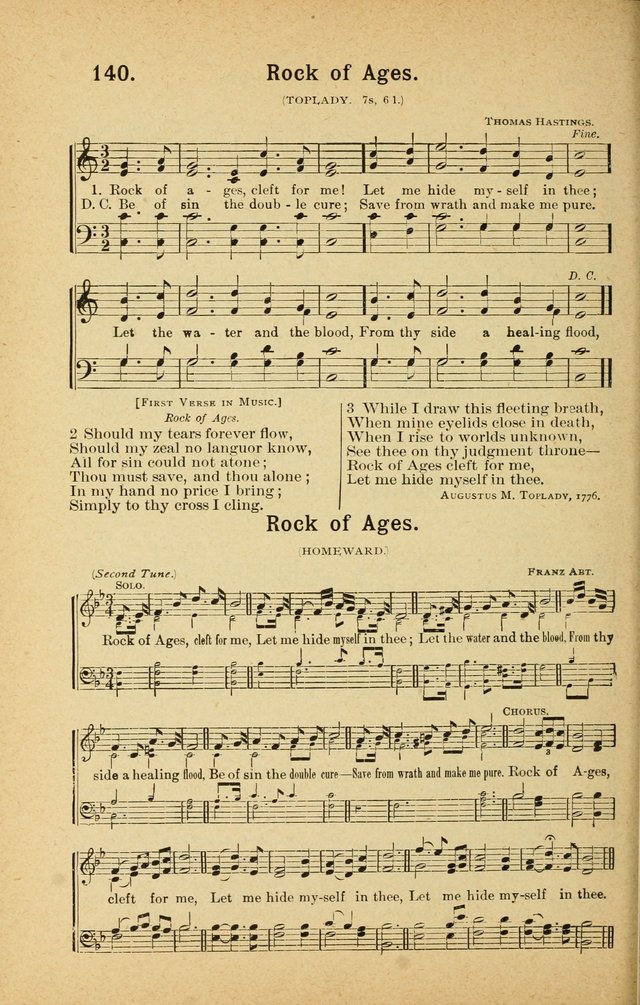Blog
“Lessons from the Greatest Hymn List”
Categories: M. W. Bassford, Worship
Last week, I posted my take on what the 50 greatest hymns of all time were, and I revised the list a few days later. Though the exercise was interesting in itself, I think the process generated some lessons that were even more interesting. I think they are as follows:
ALL HYMNS ARE NOT CREATED EQUAL. The unspoken assumption behind my compilation of the list, an assumption shared by the hundreds of Christians who interacted with me on the various threads about it, is that hymns are not all the same, and that the differences between them matter. To put things another way, there is such a thing as a good hymn, so there necessarily must be such a thing as a bad hymn.
Whenever I posit the latter online, I invariably get pushback from somebody who insists that a hymn cannot be bad unless it teaches false doctrine. In a sense, I suppose that’s true. A poorly written, low-content hymn does not directly send people to hell, any more than a sermon that’s a stand-up comedy routine or a Bible class that’s about pop psychology does.
However, most brethren will critique the pulpit comic and the pop-psychologist Bible-class teacher not for what he says, but for what he does not say. The same critique applies with equal force to bad hymns. It’s not enough for a hymn not to be actively harmful. It must be actively helpful. It must present the worshiper with meaningful spiritual content (the more the better) in a usable form, because all of us need all the help we can get.
OLDER IS BETTER. When I revised my list, I replaced the four most-critiqued hymns on the list with the four whose absence was most lamented. The oldest hymn that I removed was more recent than the most modern hymn I added. Indeed, three of the four additions (“O Thou Fount of Every Blessing”, “Rock of Ages”, and “Amazing Grace”) hailed from the eighteenth century, and two of the hymns I removed came from the twentieth century.
I was not surprised. As a rule, the older a hymn in our repertoire is, the better it is. This is not because all the hymns written in the eighteenth century were good, or even because most of them were good. It’s because the less-than-excellent ones have been eliminated by successive generations of song leaders and hymnal editors with all the ruthlessness of a farmer shooting rats in a barn. Bad old hymn? Mediocre old hymn? Bang! Dead.
This should call today’s hymnal editors, CD compilers, slide-deck creators, and song deacons to caution in adding to the repertoire. Most new hymns and praise songs today are not good either, and when we shove aside the great hymns of the past to make room for them, the quality of our song worship suffers. There are hymns that deserve to be added (“In Christ Alone” is a shining example here), but there are not nearly as many of them as many brethren think.
POP HYMNS DON’T MEASURE UP. Because this was my list, the most heavily represented category was nineteenth-century American gospel hymns. Mostly, nobody complained about that. Compared to our repertoire, the most under-represented category was 20th-century Southern gospel hymns, the hymns of the radio era. Only two of the hymns on my list were written in true Stamps-Baxter quartet style, “This World Is Not My Home” and “Victory in Jesus”. “Victory in Jesus” endured significant critique, to the point where I reasonably could have cut it instead of “Teach Me Thy Way”, which was my fourth strike. Nor did I sense much of a groundswell of support for adding more Southern gospel hymns to the list.
Those hymns were the first to come from an era of mass-media performance. Everybody in the South listened to gospel quartets over the radio back in the day, and those songs transformed the repertoire of churches of Christ. I would estimate that half or more of the hymns in Sacred Selections are from this genre.
Today, though, the Stamps-Baxter hymns are dropping rapidly from use. Now that they are no longer culturally relevant, their true colors have been revealed. Worship progressives and conservatives alike attack them for being old-timey, hokey, shallow, and not very meaningful. Indeed, in the comments on my list of good hymns, several brethren took advantage of the opportunity to poke at hymns not on the list that they didn’t like. Every one of the hymns so marked was a radio hymn.
This should teach us to beware of succumbing to the allure of cultural relevance today. There are plenty of hymns (though their adherents prefer to call them “praise songs”) written in the style of modern pop music that currently are elbowing their way into the repertoire. As was true for radio hymns, this transition often is difficult because such songs are written for performers and then adapted rather than having been created for the congregation. Their kinship to their Stamps-Baxter cousins also often appears in their shallow, repetitive content.
Such songs appeal more to the zeitgeist than to the spirit. 100 years from now, when someone who hasn’t even been born yet compiles a Top 50 Hymns list, not many of them will appear on that list either. Hymns like “When I Survey the Wondrous Cross” will continue to be beloved, but today’s hit singles will seem dated, old-fashioned, and irrelevant—just as Southern gospel hymns increasingly do now.
Some may be fine with the idea of a disposable worship repertoire. I’m not, especially when so many older hymns are worthy of use today. It’s like dumping Grandma’s china on the curb and eating Thanksgiving dinner off of paper plates. There are people who do that too, but I don’t think I’m alone in believing they’ve lost touch with something important.





